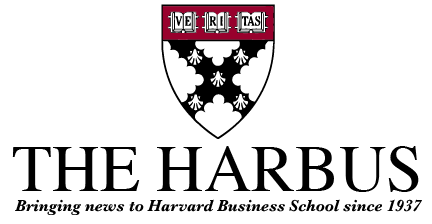Last week I ventured over the John Weeks Bridge to see what was happening on the Cambridge side of the river. Among the various events, such as a West African music show and an exhibit that features rare botanical models, made entirely of glass, were several political and educational seminars. The one I picked to visit was the Labor and Work-Life Forum, featuring Steve Rosenthal, the political director of the American Federation of Labor and Congress of Industrial Organizations (AFL-CIO).
The AFL-CIO is America’s labor movement and their mission, taken straight from their web site (www.aflcio.org), is “to bring social and economic justice to our nation by enabling working people to have a voice on the job, in government, in a changing global economy and in their communities”.
The program was part of the Harvard University Trade Union Program, considered to be the world’s most prestigious training program of its type. Its participants include labor union leaders from the US, Asia, Australia and Europe.
Steve Rosenthal spent the afternoon outlining his political strategy for upcoming national elections. His focus is on holding ground for the Democrats, placing policy agenda issues on hold until the composition of Congress is more favorable to his constituents.
After reporting exit-poll results from recent mid-term national elections, Rosenthal stated he will create a new national labor organization focused on organizing non-union minorities and women in key swing states for the 2004 presidential election. His goal is to win back the White House for the Democrats.
A little history about Steve Rosenthal’s role with the AFL-CIO is in order.
In the early nineties, labor unions were viewed by many as politically dead and during the sweeping victories led by Newt Gingrich in 1994, labor unions were framed as “part of the problem” by the conservative leadership. It was a historical low-point for labor unions in the US.
Rosenthal was hired by the AFL-CIO to improve labor union members’ political standing. From 1992 to 1996 to 2000, labor union members’ voter participation, as a percent of total voters, increased from 19% to 23% to 26%, respectively. Rosenthal viewed this as a victory and confirmation that his aggressive Get-Out-The-Vote (GOTV) campaign was working.
He credits the campaign’s success to the five following key principals: 1. Frame the importance of elections around specific issues that matter to labor union members, such as health care, 2. Increase personal one-on-one contact with members, 3. Increase the frequency of contact with member, 4. Stop telling union members who to vote for, but rather educate them about the candidates’ issue positions, and 5. Separate union political programs from political parties.
When combined with a ten-step, aggressive tactical campaigning effort that included activities such as legislative lobbying and heavy leafleting, Rosenthal’s five principals were successful in increasing labor union voter turnout during the late nineties. But, in 2002 things did not go so well for the Democrats.
Rosenthal believes that the Democrats performed poorly during the mid-term elections because they: 1. Did not have a clear political agenda, 2. Did not successfully communicate a reason to vote, 3. Failed to reframe national priorities to emphasize economic security, rather than solely national security, 4. Relied to heavily on the minority vote, and 5. Lacked sufficient organization.
“So, where do we go from here?”, asked Rosenthal today, to which he answered that his goal is to extend the labor union’s successful campaign strategy and tactics to the race for the White House. This is where his new organization will come in handy.
The AFL-CIO is required to focus its financial resources on dues-paying labor union members. It cannot target non-union working Americans.
But, as Professor Paul Weiler, of the Harvard Law School, pointed out, American workers, union or non-union, share the same challenges in the workplace. He believes unions must expand union services to non-union members.
Although not designed strictly for that purpose, Rosenthal’s idea to create a new organization outside the AFL-CIO to target American workers regardless of their union affiliation is a major step toward Professor Paul Weiler’s vision. It will test the professor’s idea and Rosenthal’s political savvy. If successful, it may provide the margin the democrats seek. But, only time and the 2004 elections will tell whether it will work. So, keep tuned. This story is just getting started.

